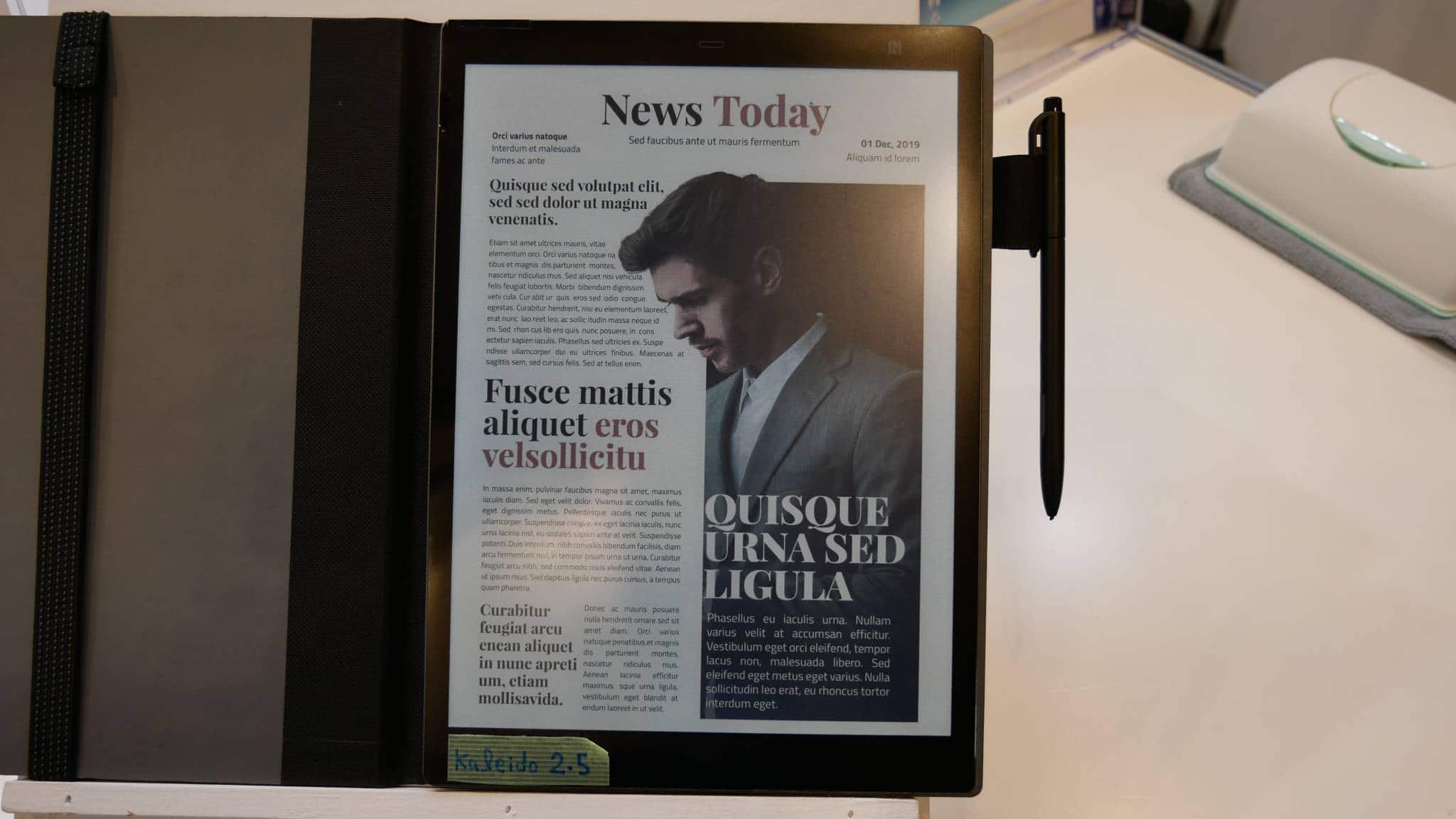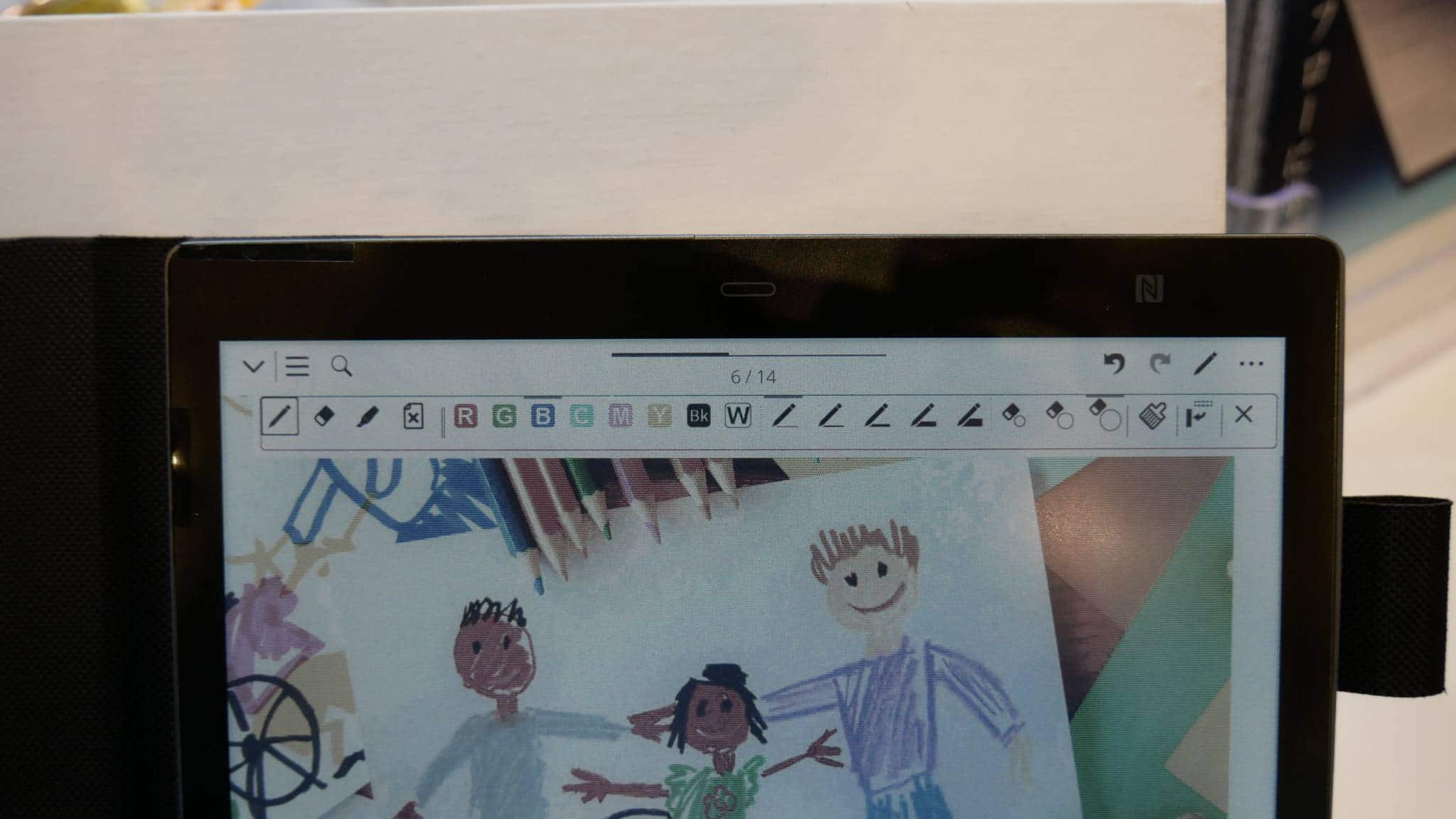Linfiny is a partnership between E INK, the company responsible for the e-paper that powers virtually every single e-reader and digital note taking device in the world, and Sony, who has a storied history with their e-readers and Digital Paper line of e-notes. Linfiny has unveiled a new Digital Paper DPT-CP1 Version 2, which is a color digital note taking device. It is employing E INK Kaleido 2.5, which is brand new technology that hasn’t even been officially announced yet. Sony has confirmed with Good e-Reader that the color filter array is now closer to the e-paper display, resulting in richer and deeper colors. It is also the first product to employ E INK Carta 1250, which is a faster ink, enabling faster page turns and faster pen input.
The Digital Paper DPT-CP1 Color version has a 10.3 inch E INK Carta 1250 and E INK Kaleido 2.5 color filter array. The B&W resolution is 1404 x 1872 at 227 PPI. The color resolution is currently unknown, ditto with the exact number of colors that it is capable of displaying. We do know that with Kaleido 2, it can only display 4,096 colors at 100 PPI, but from what we noticed with our comprehensive hands on experience, that it seemed to be capable of more colors and a higher PPI. E INK and Sony (Linfiny) told Good e-Reader that Kaleido 2.5 is bridging the gap between Kaleido 2 and Kaleido 3, they were showing Kaleido 3 at the event, but wouldn’t let us take any pictures of it, and they were very secretive of the upcoming technology. At least we know, the E INK is far along with the development of it, and it should be released later this year.
There is an all new WACOM layer on this product. Previous generations of the Digital Paper that Sony released had a proprietary stylus, that needed to be recharged via Micro USB. Instead, Linfiny have made it compatible with almost every single Wacom pen on the market. This includes the Onyx and Remarkable pens, as well as third parties such as the Lamy Al-Star EMR.
This is the first Digital Paper with a front-lit display, packing in 27 white LED lights, so you can read at night or in the dark. This is a good move, since most other 10.3 inch digital note taking devices do not have a front-it screen. This includes the Supernote A5X and Remarkable 2. The illumination on the display is phenomenal. The best we have seen so far.
Underneath the hood is a Cortex A53 Quad-core 1.8 GHZ processor, 32GB of internal storage, USB-C and Bluetooth 5.0. This is running Android 9, which is fairly modern by E INK standards, only Onyx Boox is releasing products with a higher version. You cannot sideload apps on the , but they do have a few customized apps that are running on the device, such as middleware security platform, this is because initially this product is being aimed at government and medical industries, where security is a big concern. On the demo unit we tested, you could fill out paperwork on a new job, and it would automatically be sent to the employer. They also had a tax system, where you could file your own taxes and submit it right to the Japanese government. Linfiny said the same tech could be compatible with the IRS or Revenue Canada, if the government decided they wanted to go this route.
The note taking app has been totally revised since the release of the Digital Paper DPT-RP1 and CP1 four years ago. You can draw in a number of colors such as red, green, blue, cyan, magenta and yellow. There are three different types of pencils, pens and brushes to select from and each one has five or six different thickness sizes. They pens we tested did not have pressure sensitivity, but this is not a deal breaker.
This is the first Digital Paper with an internet browser, so you can surf the web, check email or read news websites. It is the standard webkit based browser, so you have control over images and javascript. We tested this on our own website and everything looked good.
There is no estimated release date or how much this product will cost. It looks like Linfiny are hoping to sign up OEM partners to take the established design and operating system and just pay to manufacture a certain number of them. The company did not rule out that they might sell it directly to consumers if there was a demand.
Michael Kozlowski is the editor-in-chief at Good e-Reader and has written about audiobooks and e-readers for the past fifteen years. Newspapers and websites such as the CBC, CNET, Engadget, Huffington Post and the New York Times have picked up his articles. He Lives in Vancouver, British Columbia, Canada.



